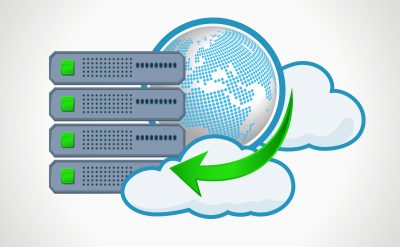The year 2020 has seen a number of cybercrimes. The frequency of these crimes has been higher than ever. Everyone sitting on the other side of their system has seen phishing emails with a standard subject line as COVID-19 or coronavirus.
Normal people have lived with the fear of life, employees with the fear of job loss, and business leaders fearing data loss. In such circumstances, many initiatives and software launches took place to save systems from ransomware/malware attacks. There has been an increase in backup files of the best virtual machines (VMs) to avoid attacks.
To a modern organization, VMs provide various benefits, and it is not surprising at all. They are useful because they offer an opportunity to consolidate your IT management into one console. It helps in managing multiple physical devices.
The primary purpose of the VMs is to operate various operating systems simultaneously from the same piece of hardware. With an additional VMware (VM management software), people enjoy the easy management of all applications from a single dashboard.
The use and impact of virtualization were ongoing before the COVID-19 pandemic. However, the effect of the pandemic triggered the implementation of virtualization to a greater extent.
Virtualization today
When COVID-19 was announced as a pandemic in March by WHO (World Health Organization), companies started considering the approach of work from home till things get normal. It was easy for some people to carry office laptops, but those with PCs faced a tough time for a few days. In such a situation, VMware Horizon and VDI (Virtual Desktop Infrastructure) solutions acted as saviors. It allowed users to work from any location as long as it had network connectivity.
The term virtualization was adopted a few years back, but the pandemic has amplified the need and accelerated the move. The DaaS (Desktop-as-a-Service) has simplified the processes for employees and IT managers. Employees and managers can access their desktop through a browser via any operating device such as phone, tablet, or laptop.
Virtualization saved a lot of time and effort by allowing individuals to have a single login and access all of their data and applications in just a few clicks.
The virtual desktop infrastructure or virtual desktop solutions makes sense for business equally. See how?
- It saves business money; purchasing costly laptops for remote workers can cost heavy
- It provides security and redundancy through the organization
- It avoids employees device failing condition
- It solves any big or small glitches by involving the IT support team to deploy or fix computer issues remotely
- It helps teams to connect regularly through enterprise applications
- It maintains employee productivity by providing the same system and working conditions
“Nutanix Frame DaaS is cloud infrastructure agnostic, meaning the product can run virtual machines on AWS, Google Cloud Platform, Microsoft Azure, and on private clouds using on-premise infrastructure with Nutanix,” says Carsten Puls, Senior Director, Frame at Nutanix. “In contrast, if you’re using a DaaS product supplied by a cloud vendor, then it won’t work with other clouds, which limits your flexibility in the future.”
Virtualization tomorrow
In the current conditions, virtualization in an organization can accelerate the Future of Work. With a lot of time spent doing work from home (WFH), both employers and employees have started realizing the benefits of working from home.
Even the technicians (Support Teams) concerned about the data security and end-users have seen how well it works. It opens the door for long-term opportunities and work-life balance.
Steve Desrosier, Solution Architect at Evolving Solutions, states, “In addition to technology, I think that the crisis is helping employers transition to the management style needed for remote workers. By understanding how people work and how to measure what’s getting accomplished instead of counting noses, managers likely will see that remote work can work for a large percentage of employees.”
But instituting WFH in the future cannot be just about enabling social distancing norms and proactive communication with vital networking. Given the future is expected to be completely digital, there should be some more fundamental changes.
Apart from virtualization, the IT industry needs to incorporate the following changes in the future:
- There should be seamless connectivity throughout the organization
- There should be easy access to cloud and mobility platforms
- There should be best-in-class security for the virtual workplace for long term sustenance
- There should be automation in firewall application and software update
- The end-user support must be provided through tools like chatbots, workflow management systems, and automated incident routing
- The collaboration apps such as Zoom and Microsoft Teams are expected to become dynamic with the advanced set of features
- The application and services should be installed and managed on the cloud rather than on-premises
After the dust settles from adapting to the current situation, companies should review their setup and processes. Since many decisions were made quickly in the initial phase of the COVID-19 pandemic, companies need to take a step back and correct mistakes and oversights before moving forward.
Undoubtedly, the 2020 pandemic has been devastating. Still, we cannot deny that it has accelerated the long-awaited work from the home scenario for many small and medium-sized businesse s. It has pushed many organizations to rethink their IT infrastructure, implement better technologies such as virtualization, and leap forward into the future’s blue skies.
For more such content, download our latest whitepapers on cloud.













